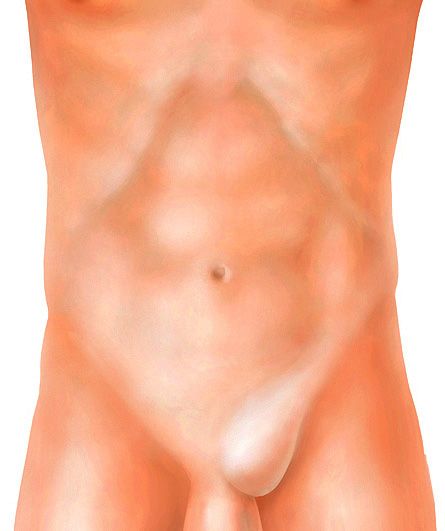
An asymmetrical protrusion in the groin area is often noticeable, but it is not uncommon for the hernia to be present on both sides. Typical symptoms are recurring pulling groin pain and protrusions when coughing or carrying heavy objects. A hernia is diagnosed by means of a physical examination. Imaging examinations are rarely necessary.
Surgical techniques
The choice of surgical technique depends on various factors such as previous operations, bilateral hernia, existing umbilical hernia and the patient’s wishes. The operation is planned individually, as the possible surgical techniques each have their advantages and disadvantages.
We usually use one of the following techniques:
- In open surgery according to Lichtenstein, a short transverse incision is made directly above the groin region, the inguinal canal is opened and the hernia sac is exposed. This is treated, then the groin is reinforced with a plastic mesh, whereby a sufficiently large opening is created in the mesh for the supply structures of the testicle.
- In the minimally invasive Total Endoscopic Extraperitoneal Plastic (TEEP) procedure, a small incision is made below the navel. Further dissection opens up a space in front of the peritoneum in the abdominal wall. The inguinal region is visualized from the inside using a camera and special instruments and the hernia sac is removed from the hernial orifice. A sufficiently large mesh is inserted and fixed in the correct position in the opened space. This closes the hernia and also strengthens the other weak areas of the groin.
Possible complications
- General complications: Allergic reaction, thrombosis, urinary retention
- Surgical complications: Bleeding, fluid accumulation, infection, injury to the supply structures of the testicle, chronic pain, recurrence of the hernia

